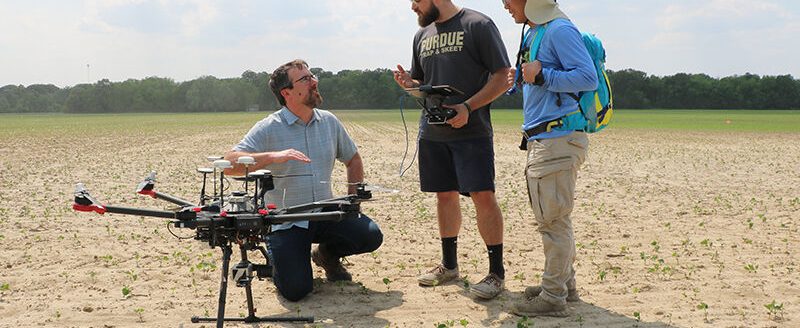The most recent Farm Income Forecasts by the U.S. Department of Agriculture estimate a 15.9% drop in farm income for 2023, which translates to a “real” drop of 18% when inflation is factored in. At the same time, expenses for farm and ranch production are expected to increase by $18 billion—on top of a record increase of $70 billion in 2022.
These estimates were recently highlighted by Zippy Duvall, president of the American Farm Bureau Federation, during his four-and a-half-hour testimony before the House Agriculture Committee, which mined USDA figures to provide a detailed picture of the challenges facing producers.
“From losses experienced in the trade war with China, to pandemic lockdowns, and supply chain disruptions. Add to it the record-high supply costs, and you see how farmers and ranchers have faced unprecedented volatility in recent years,” Duvall said in his opening remarks.
Livestock takes biggest hit
The livestock sector took the biggest hit, due to highly pathogenic avian flu decimating poultry stocks. “The largest decrease in net farm income is tied to a projected fall in cash receipts from livestock due to lower prices for all major categories except cattle,” Duvall said.
The value of livestock production is expected to decrease nearly 6%, or $14.7 billion, in 2023. Chicken eggs and milk are responsible for the largest percentage decreases, with cash receipts for chicken eggs projected to decrease by $4.9 billion or 24%. HPAI has affected over 52 million birds in commercial flocks in the U.S., including over 43 million egg layers, pressuring supplies and pushing up prices.
“As the flock recovers, egg production increases and consumer demand fundamentals recalibrate prices lower,” Duvall said.
Milk receipts are similarly expected to decline $8.4 billion, or 14.6%, on expectations for higher milk production and lower corresponding prices.
Beef prices were up, but the cattle herd was substantially reduced during the drought as heifers were slaughtered prematurely. “Cash receipts for cattle and calves are estimated to increase by $2.1 billion or 2.4%; but this is because drought conditions in the West and southern Plains have damaged pastures and led to higher costs for feed such as hay. This has resulted in many farmers marketing heifers that would typically be kept for breeding and herd replacement, resulting in a reduction in U.S. cattle inventory that will continue for years.”
For row crops, Duvall mentioned the impact of drought, which is expected to reduce receipts for corn by 4.5% ($4.1 billion), while soybeans are expected to be down 8.1% ($5.2 billion). Wheat receipts, however, are expected to be up 4% ($0.6 billion) and hay receipts to grow by $0.6 billion (6.1%).
Fertilizer costs to decline, but still “crushing”
Fertilizers, lime and soil conditioners are expected to decrease $1.25 billion, or 3%, from $43.42 billion to $42.17 billion, but those costs can still be “crushing” for producers, Duvall said. He noted that fertilizers typically represent about 15% of a crop farmer’s costs.
Fuels and oils are expected to experience the largest percent decline–17%–from 2022, moving from $20.25 billion to $17.1 billion.
Labor, inflation outpace declines
Rises in costs due to inflation and labor shortages are among the biggest challenges, as they are expected to outpace any declines in other input costs. Marketing, storage and transportation are forecast to increase 11%. Labor costs are expected to be up across all subcategories, with cash labor forecast to move from $39.2 billion to $42.08 billion, an increase of 7%.
Inflation, currently sitting at 6.5%, “remains a source of uncertainty and is eroding asset values,” said Duvall, and interest expenses have increased as the Federal Reserve Bank attempts to bring inflation under control through higher rates. Between 2022 and 2023, interest expenses, including operator dwellings, are expected to jump 22%, going from $27.6 billion to $33.84 billion, making it more difficult for farmers and ranchers to access lines of credit to purchase inputs and equipment this year.
However, based on 2023 debt and asset levels, USDA expects the debt-to-asset ratio to be 13.22% for 2023, which sits just below the prior five-year average of 13.5%. This means farmers “are expected to hold steady on borrowing to finance the purchase of assets.”
Duvall said the Fed’s “aggressive” moves to lower interest rates are "strengthening the dollar, which undermines U.S. agricultural export competitiveness.”
Sign up for HPJ Insights
Our weekly newsletter delivers the latest news straight to your inbox including breaking news, our exclusive columns and much more.
Other producer challenges outlined by Duvall included regulatory hardships, including restricted access to pesticides; the Biden administration’s proposed new Waters of the United States rule; a proposed Securities and Exchange Commission emissions reporting rule; and shortcomings in the H-2A labor program.
Duvall’s full testimony is at bit.ly/3mxBUk5.
David Murray can be reached at [email protected].




